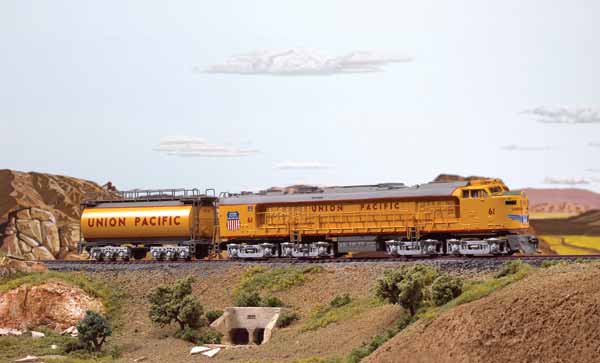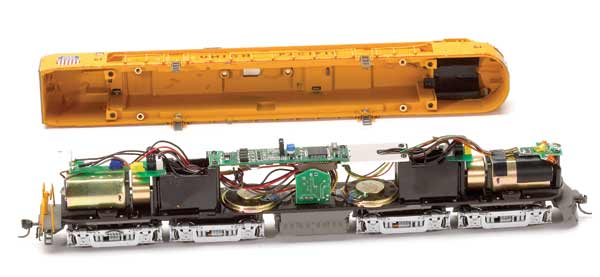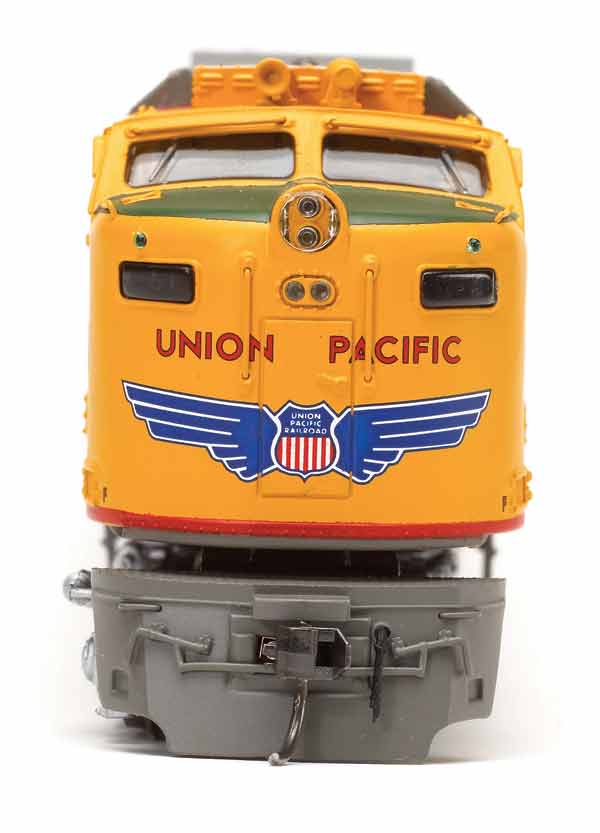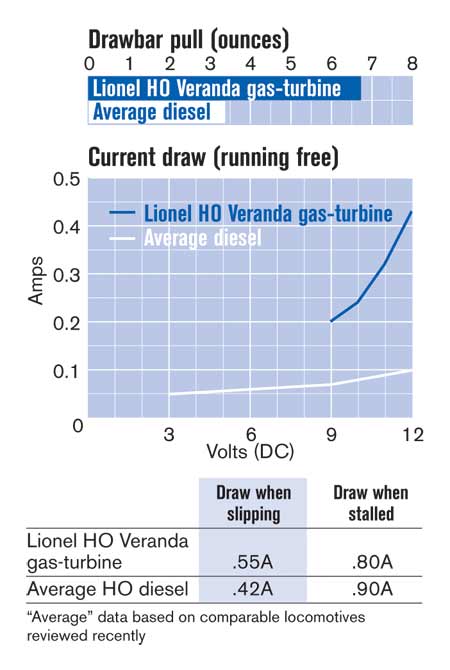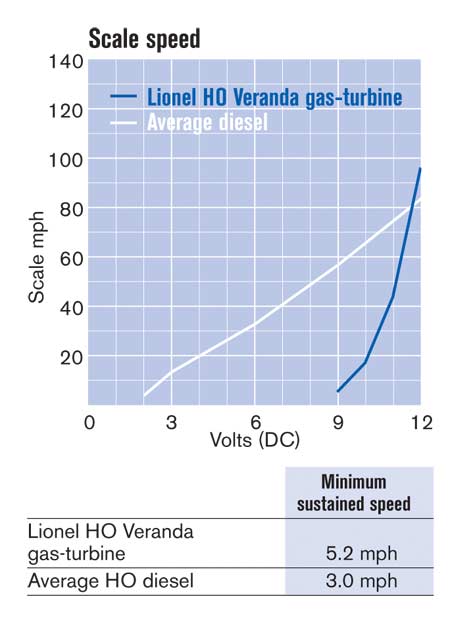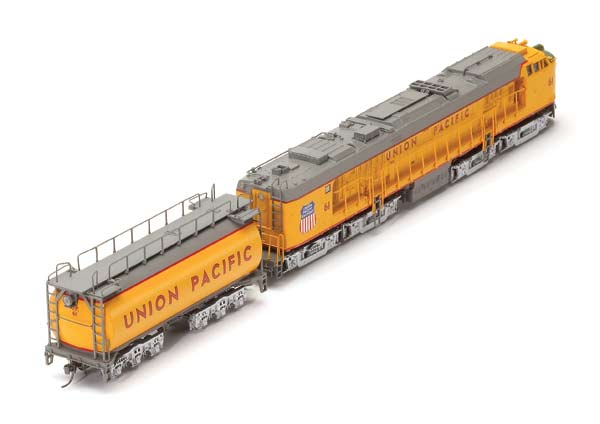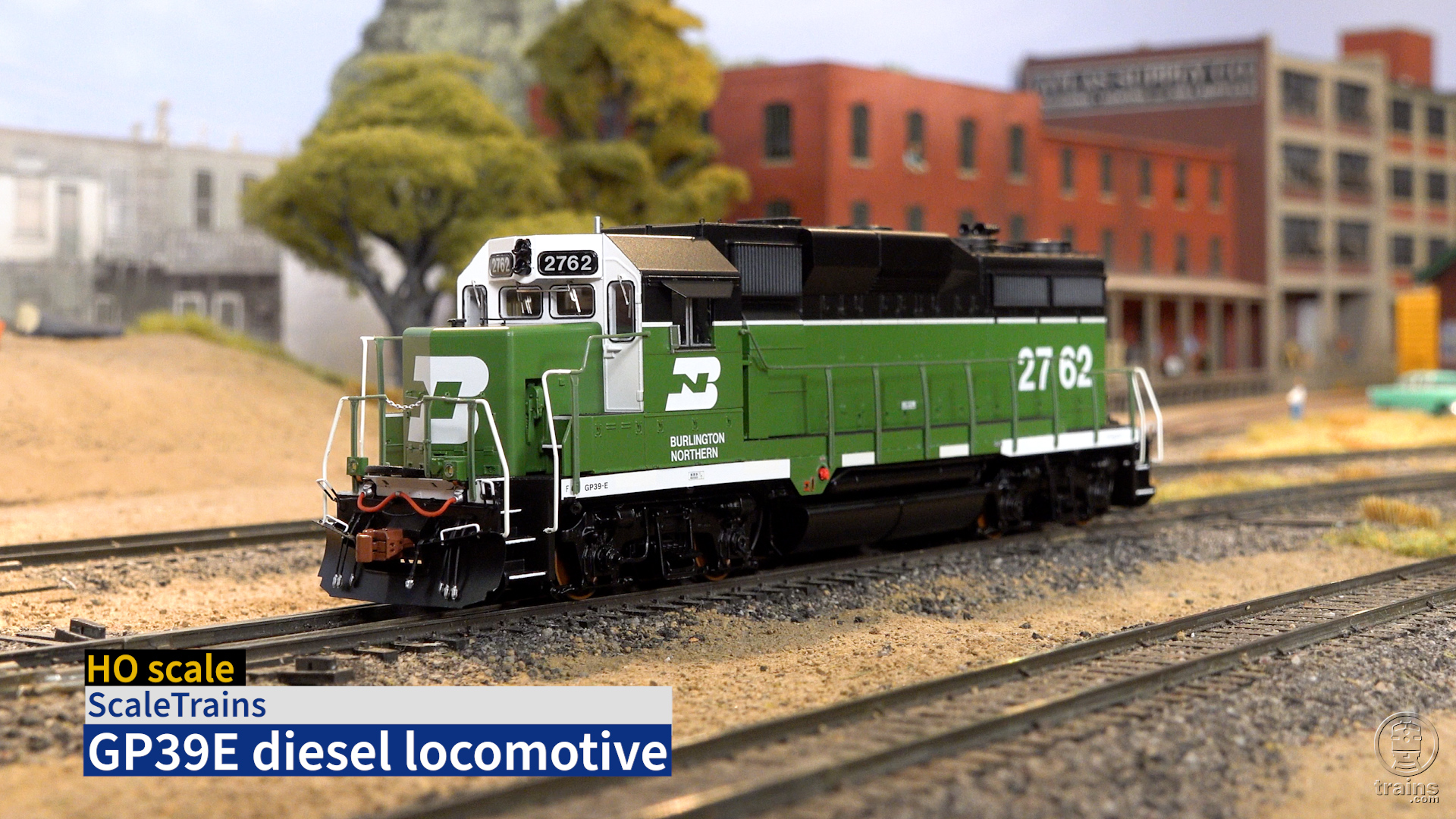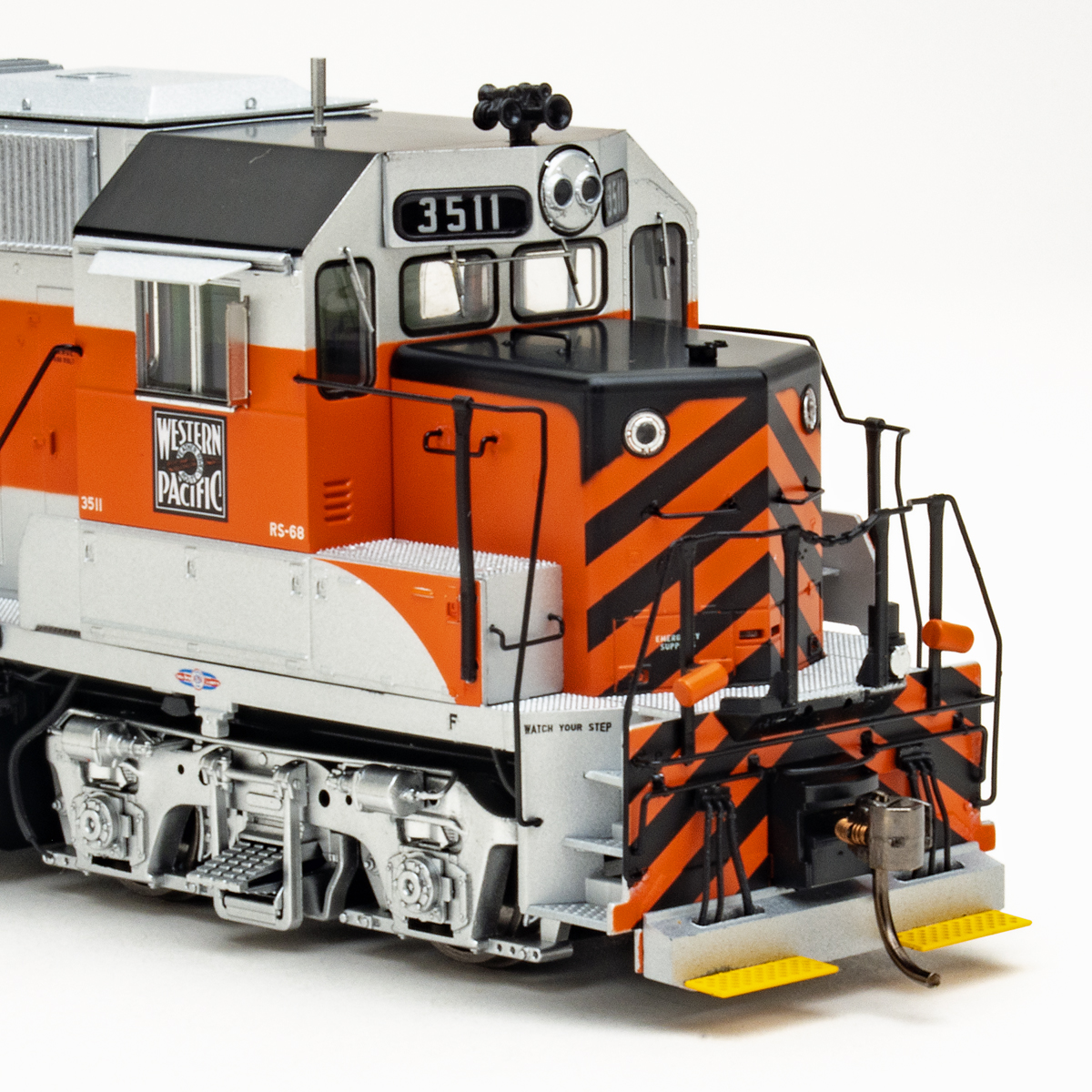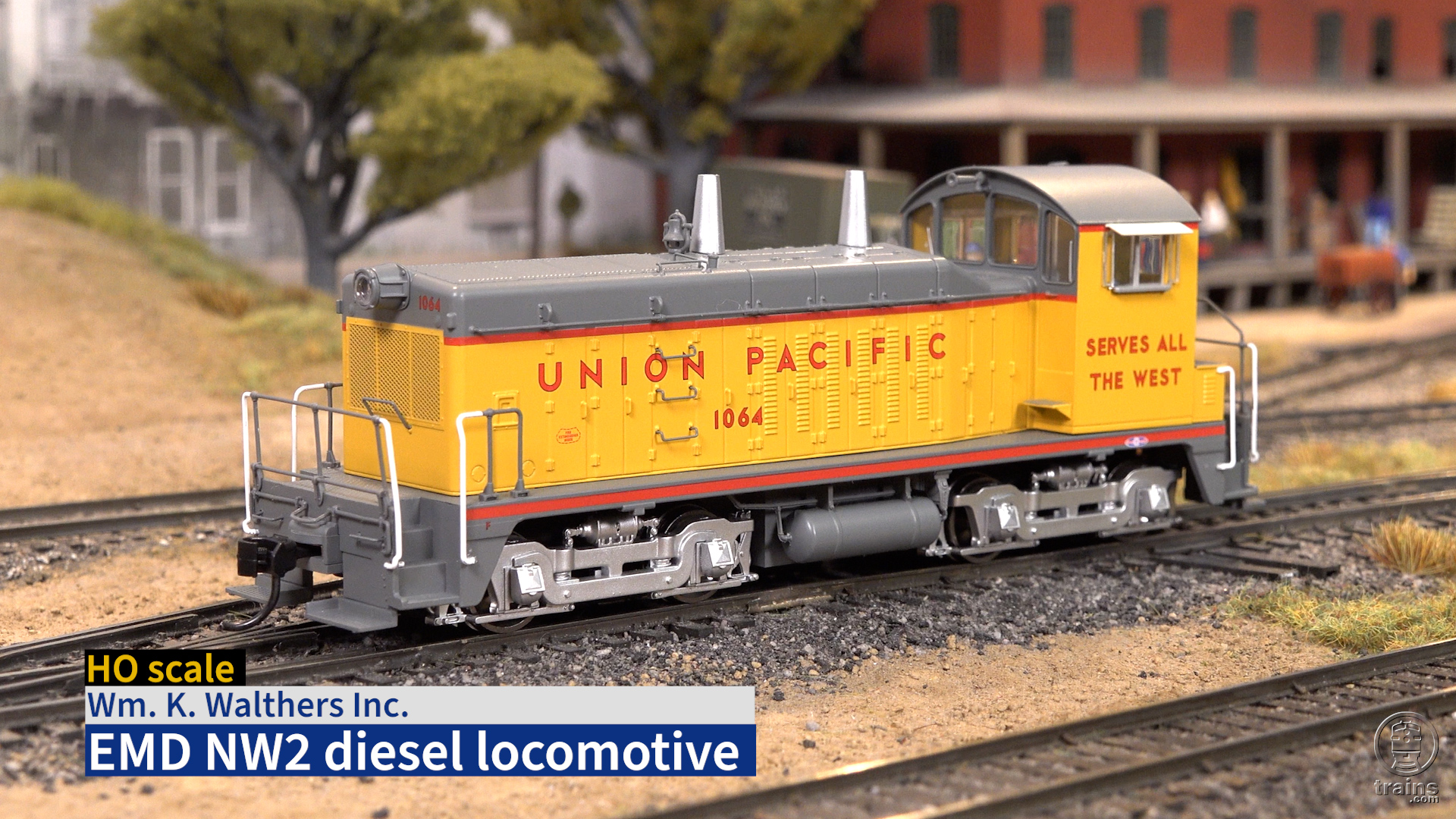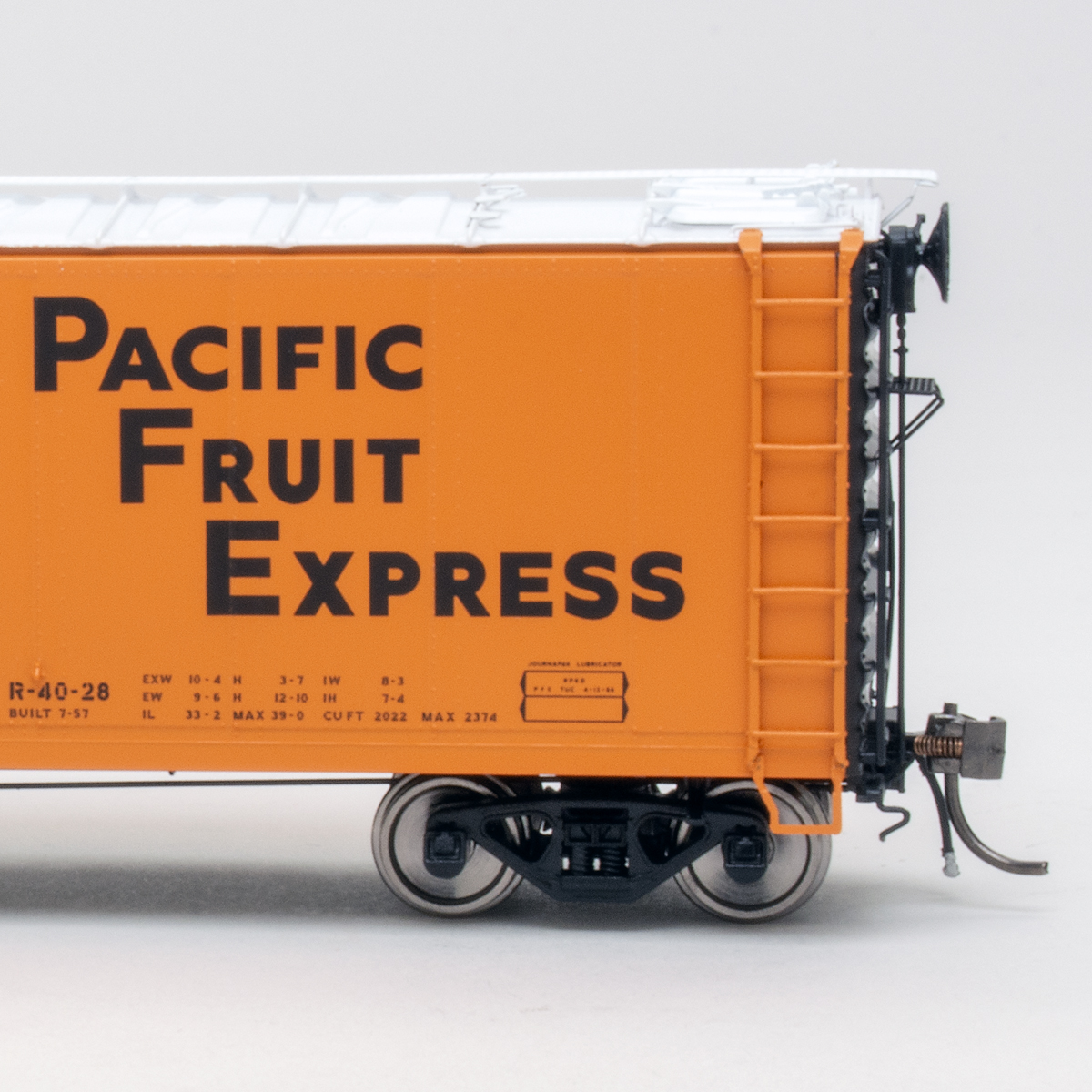The UP has historically valued big power (think Big Boy, Challenger, or DD40AX), and during the 1950s and ’60s its big locomotives were gas-turbine-electrics built by General Electric. This model represents a prototype from the second group of these enormous 4,500-hp locomotives, the single-cab, narrow-bodied “Veranda” turbine of 1954. Its nickname comes from the road-switcher-style walkways, or “verandas,” on each side.
The turbines were powerful, but high maintenance costs eventually caused their demise, and they were all retired by 1964. Later on, their trucks and span bolsters were reused under UP’s GE U50 road diesels.
The model certainly doesn’t lack for weight — with its die-cast metal body and chassis, it weights more than two pounds. It produces 6.7 ounces of drawbar pull, which is equivalent to 94 free-rolling cars on straight and level track.
The dual speakers for the QSI sound system are mounted in the locomotive also, so you can choose whether or not you want to pull the plastic-bodied auxiliary fuel tender behind the locomotive. (UP added the tenders in the late 1950s — they were rebuilt steam-engine tenders.)
All 16 locomotive wheels pick up current, and the QSI control circuitry adjusts automatically for DC or Digital Command Control (DCC) operation. The electronics package also includes a working simulated Mars light and load regulation (a.k.a. “cruise control”) that keeps the locomotive oeprating at an even speed on grades.
One of the quirks of the prototype turbines was that it took about five minutes to start or shut down the turbine engine. Despite the delay, UP engineers often shut down the turbine on long downgrades or while stopped, because of its enormous appetite for fuel (600 gallons per hour at full throttle, 200 gph at idle). The locomotives also had 250-hp diesels on board which could propel the locomotive at up to 25 mph and provided power for the air compressors and other auxiliary equipment.
The model’s sound system requires 45 seconds to start or stop the turbine; when the headlight comes on, the locomotive is ready for turbine operation. The locomotive operates in these two modes even when the sound is turned off.
You can tell which mode the locomotive is in by the headlights (the rotating signal light comes on for turbine operation).
Our sample ran reasonably well and produced good tractive effort, but it did exhibit a few quirks. One was that it ran a bit unevenly at low speeds (about 25 scale mph) on DCC. It didn’t stall, but the speed wasn’t as steady as you’d expect from a locomotive with load compensation. This problem should improve with operation.
Very stiff wires to the pickups on the rear truck caused the turbine to derail when backing through a turnout. Adjusting the placement of the wires helped, but the best cure is replacing them with more-flexible wires. All the wheels are in gauge. A Lionel spokesman said both problems will be fixed before the next versions are released in fall 2004.
The diesel engine and horn sounds were especially good. The turbine sounds are very, very cool as the turbine spins up or down; at speed you hear less of the whine and more of the exhaust roar.
The placement of its many details appears accurate also, but the grills and details, many of which are cast into the metal, are heavy, and the handrails on our sample were bowed. The detailing on the plastic tender is also heavy, especially the handrails and the stamped-metal rear ladders.
As we move into an era in which one manufacturer’s locomotives often include electronics from a second supplier, we’re starting to see models on which some components are executed better than others. The Lionel Veranda is in this category: The electronics package is state-of-the-art, but the locomotive’s appearance falls short of that standard. Still, the Veranda is an interesting (and powerful) model. Fans of big power in general and the Union Pacific in particular will enjoy it.
Price: $499.99
Manufacturer:
Lionel LLC
50625 Richard W. Blvd.
Chesterfield, MI 48501-2493
www.lionel.com
Description:
Die-cast metal ready-to-run
gas-turbine locomotive
Features:
Automatic decoder with QSI
sound system (dual speakers)
that operates on DC or DCC
Blackened, nickel-silver RP-25
wheels, correctly gauged
Cab interior with crew
Directional constant lighting with
oscillating signal light
Drawbar pull: 6.72 ounces
Dual five-pole can motors with
flywheels
Eight-wheel drive
16-wheel electrical pickup
Engine weight: 2.7 pounds
Kadee magnetic knuckle
couplers at the correct height
Lighted number boards
Minimum radius: 18″
Separate factory-applied details
Road Name:
Union Pacific nos. 61 or 73





